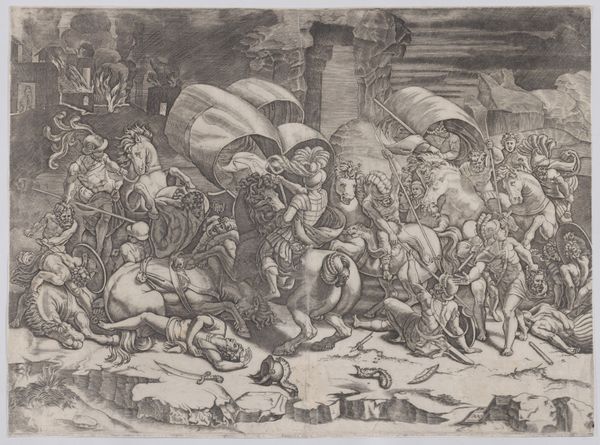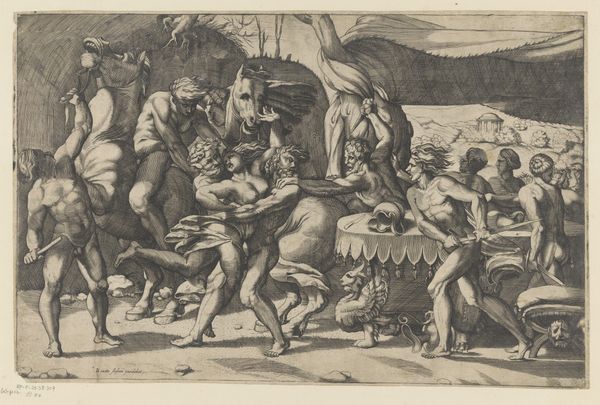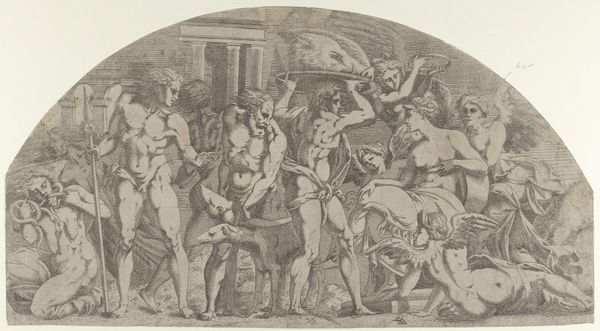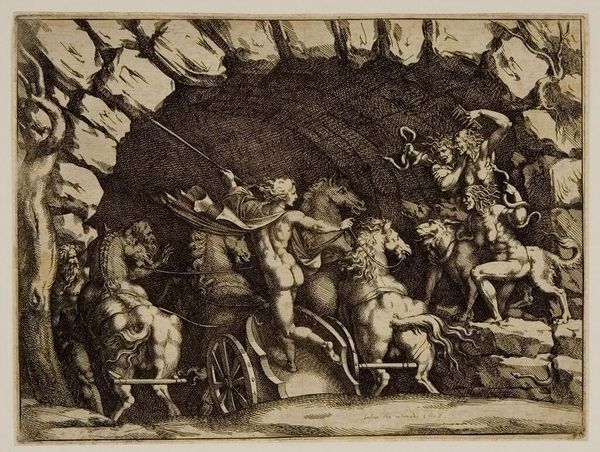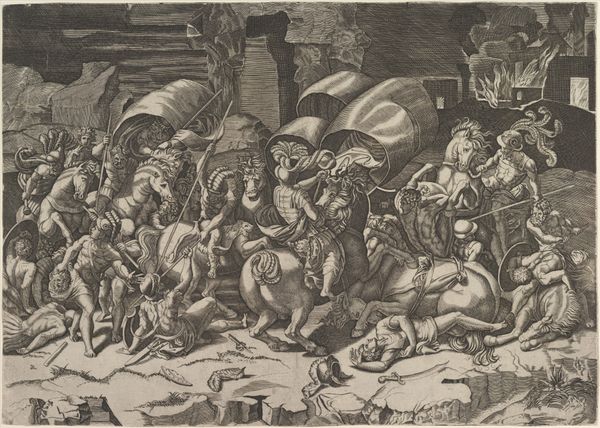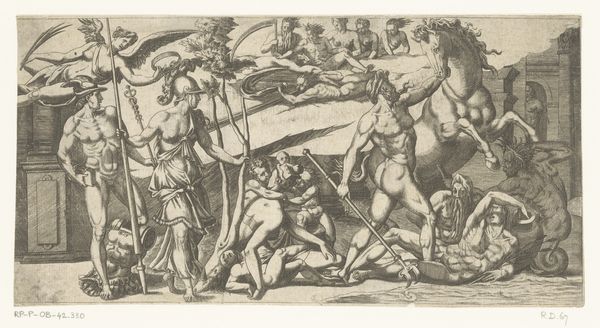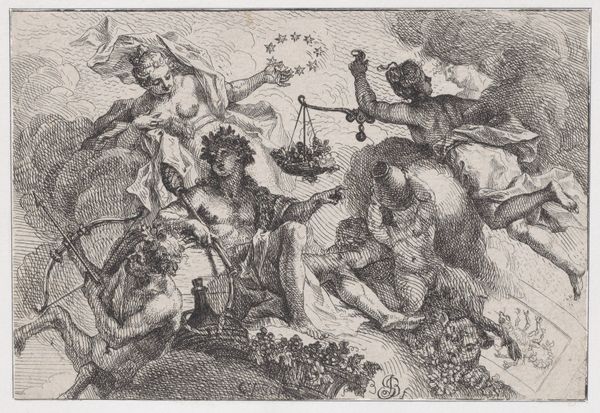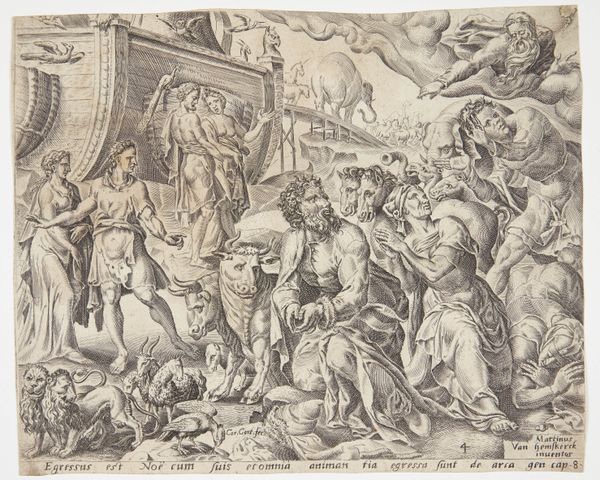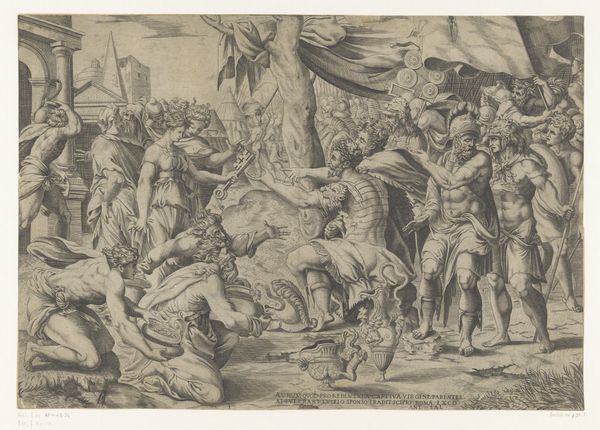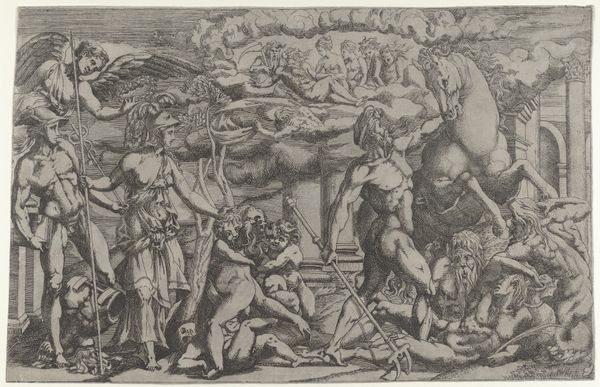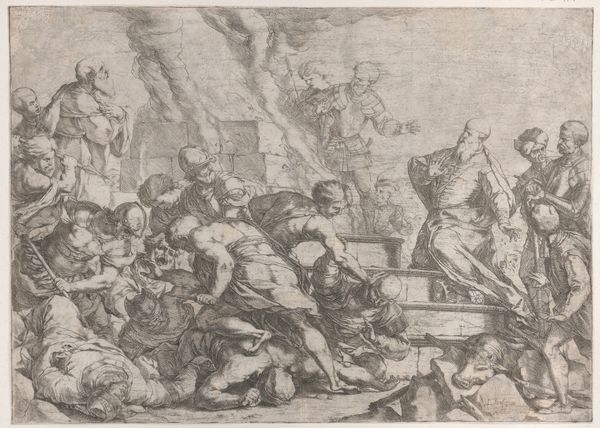
Pluto, seen from behind, entering the Underwold on his chairot, Cereberus and three Furies to right, from 'Giove che fulmina li giganti', after the frescoes on the ceiling of the Sala dei Giganti designed by Giulio Romano for the Palazzo del Te, Mantua 1675 - 1685
0:00
0:00
drawing, print, engraving
#
drawing
#
allegory
#
baroque
# print
#
figuration
#
history-painting
#
engraving
Dimensions: sheet: 7 1/2 x 10 1/8 in. (19.1 x 25.7 cm)
Copyright: Public Domain
Curator: I’m struck by the texture. The printmaking is so rich, despite the fairly limited range of tones! The hatching really creates a sense of depth. Editor: You’re right! This engraving, “Pluto, seen from behind, entering the Underworld on his chariot” was executed between 1675 and 1685 by Pietro Santi Bartoli, after the frescoes painted in the Palazzo del Te. I am captivated by the cultural inheritance it shows, the persistence of Greco-Roman myths across time. Pluto's chariot plunges into the depths, yet the light catches him... what meaning does that offer? Curator: The engraver obviously used some advanced techniques to render Giulio Romano’s ceiling fresco. The social status imbued in this work by association to its artist of origin in fact overshadows Bartoli’s artistry. Editor: I understand your point; yet, looking at it as an allegory, I find Pluto, as Hades, represents not just death, but the hidden, the unseen. The chariot's arrival and the presence of Cerberus and the Furies suggests a transition, a passage... from surface to depth, life to what we cannot know. Curator: But also look at those Furies. Look how dynamic Bartoli made the creatures, twisting bodies almost spilling into the viewer's space! Think about the economic impact; how easily this medium was replicated to grant common viewers access to these mythical renderings previously only privy to wealthy families who commissioned frescoes. Editor: Their writhing suggests more than mere activity, but suffering or torment - the psychological landscapes of the underworld. Perhaps the image serves not only to recount a tale, but also to delve into humanity’s primordial fears, and their constant reincarnation in modern imagery, regardless of social status, from antiquity forward. Curator: It is certainly intriguing how these figures and stories remain visually potent and economically relevant. This makes you consider who commissioned it? Why an engraving of the Palazzo del Te frescoes? Did this print bring social elevation to its engraver? So many questions surrounding this sole material work! Editor: Exactly! Its persistent relevance shows its continued hold on the collective imagination, our struggles to articulate what it means to be. Curator: I must concede, even in its flat, reproduced state, the depth Bartoli manages to achieve adds layers of context to our readings of mythological undertones. Editor: I concur! And the dialogue it initiates between artists over decades continues to enrich how it speaks to us today.
Comments
No comments
Be the first to comment and join the conversation on the ultimate creative platform.

